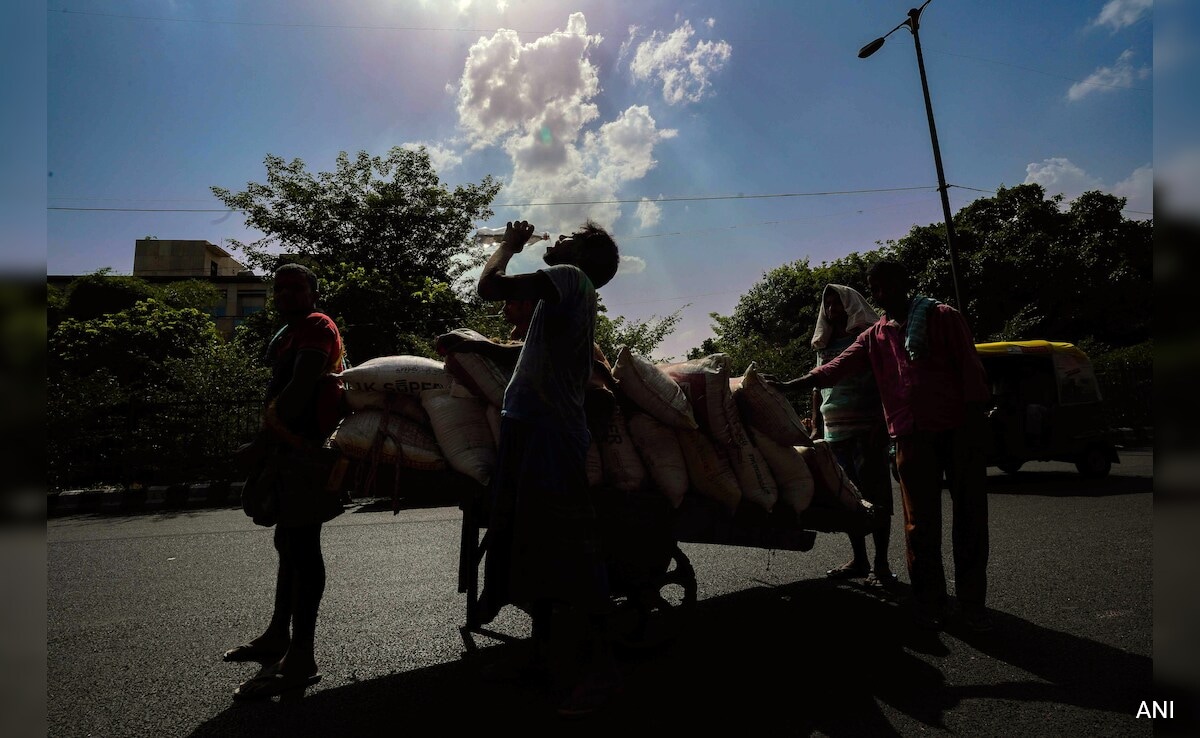
Extreme heat could stress power grids and cause water shortages (representative)
New Delhi:
A scorching heat wave hit parts of India on Saturday, with maximum temperatures ranging between 40 degrees Celsius and 46 degrees Celsius in many areas.
According to the India Meteorological Department (IMD), heat wave to severe heat wave conditions prevailed in Chhattisgarh, Jharkhand, Odisha and Gangetic West Bengal during the day.
An ongoing heat wave has affected parts of Ganga in Odisha, Jharkhand and West Bengal, the second such wave this month. The first spell scorched parts of Telangana, Andhra Pradesh, Tamil Nadu and Gujarat.
On Saturday, the maximum temperature was seven to eight degrees above normal at some places.
Baripada and Budh in Odisha recorded a maximum temperature of 45.2 degrees Celsius, while Midnapur and Bankura in West Bengal recorded a maximum temperature of 44.5 degrees Celsius and 44.6 degrees Celsius respectively. The temperature in Daltonganj and Jamshedpur in Jharkhand was 43.6 degrees Celsius and 43.5 degrees Celsius respectively, while it was 43 degrees Celsius in Rajnandgaon in Chhattisgarh.
The heat wave threshold is reached when the maximum temperature at a weather station reaches at least 40 degrees Celsius in plains, 37 degrees Celsius in coastal areas, and 30 degrees Celsius in hilly areas, and deviates from normal values by at least 4.5 degrees. If the deviation from normal temperature exceeds 6.4, a severe heat wave is declared.
Amid prevailing but waning El Niño conditions, IIMD had earlier warned of extreme heat between April and June, intensifying as about one billion people are expected to exercise their right to vote during the seven-phase general election. Concerns about vulnerability to heat waves.
Voting for the first phase of the election takes place on Friday (April 19).
The Met Office said it expected four to eight days of heatwaves in different parts of the country in April, compared with the normal one to three days. Heatwaves are expected to last for 10 to 20 days throughout April to June, compared with the normal range of 4 to 8 days.
Areas where more heat waves are expected include Madhya Pradesh, Gujarat, Odisha, Andhra Pradesh, Madhya Maharashtra, Vidarbha, Marathwada, Bihar and Jharkhand . Heat waves may last for more than 20 days in some places.
The intense heat could put pressure on power grids and cause water shortages in parts of India.
Global weather agencies, including IMD, also expect La Niña conditions to emerge later this year.
El Niño – the periodic warming of surface waters in the central Pacific Ocean – is associated with weakening monsoons and dry conditions in India. La Niña – the opposite of El Niño – results in abundant rainfall during the monsoon season.
In an update in mid-April, IMD said India’s cumulative rainfall during the 2024 monsoon season will be above normal, with La Niña expected to emerge as the dominant factor in August-September.
Monsoons are crucial to India’s agricultural landscape, with 52% of net cultivated land area dependent on them. In addition to generating electricity across the country, it is also critical for replenishing reservoirs critical for drinking water.
(Except for the headline, this story has not been edited by NDTV staff and is published from a syndicated feed.)
wait reply load…
Follow us on Google news ,Twitter , and Join Whatsapp Group of thelocalreport.in













